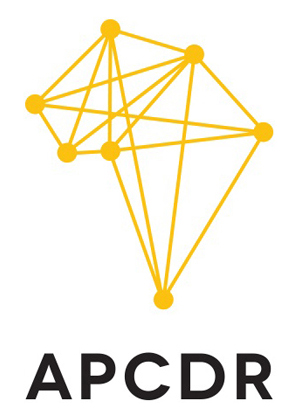ISCB Africa ASBCB Conference on Bioinformatics 2017
SESSION 2: Host/pathogen interactions and dynamics of infectious diseases
Oral Presentation Abstracts
The fecal microbiota of scavenging pigs (Sus scrofa domesticus) are potential reservoir of pathogens of public health importance
Presenter:
Kilaza Mwaikono
University of Cape Town
Additional authors:
Paul Gwakisa
Nelson Mandela African Institution of Sciences and Technology
School of Life Sciences and Bioengineering
Solomon Maina
International Livestock Research Institute
Biosciences eastern and central Africa
Pigs scavenging in dumpsites are exposed to microbes of public health importance, yet little is known of their fecal microbiota. We characterized the fecal microbiota of pigs scavenging in municipal dumpsite as compared with conventionally reared pigs.
Fifty-five fecal samples were collected from pigs under three management systems: Pigs scavenging on a dumpsite (FecD), indoor-reared (FecI) and pigs transferred from indoor to free-range on dumpsite (FecIF). Total DNA was extracted; V4 of 16S rRNA gene amplified and sequenced using MiSeq. The same sample was used to isolate enteric bacteria that were later tested to eight antibiotics.<br>A total of 4,364,507 sequences passed quality control from which 40,803 OTUs dominated by Firmicutes 51%, Proteobacteria 26%, Bacteroidetes 12%, Spirochaetes 3% and Actinobacteria 3% were detected. There was significant difference in bacterial community membership and structure between FecD and FecI (Yue and Clayton, P = 0.001; Jaccard, P = 0.032), respectively. Out of 830 genera, 74 were significantly different (P ≤ 0.05) between FecD and FecI amongst which 27 (36%) were exclusive to FecD. Some isolates from scavenging pigs had 99% sequence similarity to pathogenic Escherichia furgosonii, Shigella sonnei, Enterococcus faecium and Escherichia coli O154:H4. Over 50% of the isolates were resistant to Penicillin G, Ceftazidime and Nalidixic Acid, while others were multidrug resistant.
The fecal microbiota of pigs scavenging on dumpsite is a potential reservoir of pathogens. Controlled grazing of livestock to mitigate health risks is advocated. Further study of the gut microflora of free-range pigs and their clinical significance is warranted.
New Bioinformatics-based Discrimination Formulas for Differentiation of Thalassemia Traits from Iron Deficiency Anemia
Presenter:
Abdul Hafeez
Kandhro Mahidol University
Thalassemia traits and iron deficiency anemia (IDA) are the commonest disorders that frequently cause hypochromic microcytic anemia (HMA). Early screening of TTs and IDA is crucial for further investigation, therapeutic management, and genetic counseling. The present study aimed to differentiate TTs from IDA by analyzing discrimination formulas. The present study provides comprehensive data on hemoglobin disorders prevalent in five districts of Sindh Province, Pakistan. Among twelve published discrimination formulas, six formulas; MI, EF, G&K, RDWI, R, and HHI were the most reliable with higher accuracies with Youden’s index 1.0, and could discriminate TTs from IDA. The failure cutoff values of the six formulas were improved by the RF decision tree approach. Moreover, the S&L formula which completely failed to discriminate IDA from TTs with original cutoff value (<1530), improved with the use of new proposed cutoff value (<1016) and was found to successfully discriminate all cases of TTs from those with IDA. In addition, two newly proposed formulas discriminated TTs from IDA more reliably than the original 12 formulas assessed. Proposed formulas could play a crucial role for clinicians to discriminate between TTs and IDA, which both tend to have HMA, especially in premarital screening.
Protein Complexes of RNA-Seq gene expression data revealed functions enriched in the invasion of Red Blood Cells by Plasmodium falciparum
Presenter:
Jumoke Soyemi
Federal Polytechnic, Ilaro
Additional authors:
Itunuoluwa Isewon
Covenant University Bioinformatics Research Group
Computer and Information Sciences
Jelili Oyeladeuk
Covenant University,
Department of Computer and Information Sciences
Ezekiel Adebiyi
Covenant University
Department of Computer and Information Sciences
This study employed RNA-seq time course gene expression data specifically, at the late trophozoite and schizont stages of the Plasmodium falciparum where merozoites matures, ruptures and are released to invade the red blood cells. We extracted differentially expressed genes (DEGs) from a time series RNA-seq gene expression experiment using R package. Protein-protein interactions (PPIs) were identified from high-throughput yeast two-hybrid (Y2H) experiment and supplemented with PPIs from database. From the protein interaction network (PIN) built, we identified 16 protein complexes using the molecular complex detection (MCODE) algorithm in Cytoscape. The functional enrichment of the identified protein complexes revealed functions related to gene expression, translation, RNA transport and metabolic/biological processes. Identifying these protein interactions complexes are important because most proteins carry out their functions by interacting with other proteins since proteins rarely act alone. The identified protein complexes could further be taken to the laboratory as drug targets and validated in order to progress to the drug discovery phase for future therapy development against the disease. Quite a number of our predictions are consistent with those from previous studies. Protein complexes that are active during RBC invasion by the merozoites have been predicted by this study.
Keywords: RNA-Seq time course data, Plasmodium falciparum, DEGs, Protein Complexes, MCODE, Cytoscape
Endosymbiosis, origins and gene expression in the photosynthetic protist Euglena gracilis
Presenter:
ThankGod Ebenezer
University of Cambridge
Additional authors:
Martin Zoltner
University of Dundee
1Wellcome Trust Centre for Anti-Infectives Research
Alana Burrel
Oxford Brookes University
Department of Biological and Medical Sciences
Anna Nenarokova
Czech Academy of Sciences Biology Centre, Institute of Parasitology
Anna Vanclová
Charles University in Prague
Department of Parasitology
Binod Prasad
University of Erlangen-Nuremberg
Department of Biology
Carlos Santana
Universidad Pablo de Olavide
Centro Andaluz de Biología del Desarrollo (CABD)
Ellis O’Neill
University of Oxford
Department of Plant Sciences
Gowthaman Ramasamy
University of Washington
Center for Infectious Disease Research
Nerissa Nankissoor
University of Alberta
Department of Cell Biology
Samuel Obado
The Rockefeller University
Laboratory of Cellular and Structural Biology
Andrew Jackson
University of Liverpool
Department of Infection Biology, Institute of Infection and Global Health
Damien Devos
Universidad Pablo de Olavide
Centro Andaluz de Biología del Desarrollo (CABD)
Joel Dacks
University of Alberta
Department of Cell Biology
Julius Lukes
Czech Academy of Sciences
Biology Centre, Institute of Parasitology
Michael Lebert
University of Erlangen-Nuremberg
Department of Biology
Peter Myler
University of Washington
Center for Infectious Disease Research
Susan Vaughan
Oxford Brookes University
Department of Biological and Medical Sciences
Vladimir Hampl
Charles University in Prague
Department of Parasitology
Mark Carrington
University of Cambridge
Department of Biochemistry
Michael Ginger
University of Huddersfield
Department of Chemical and Biological Sciences
Steven Kelly
University of Oxford
Department of Plant Sciences
Mark Field
University of Dundee
Wellcome Trust Centre for Anti-Infectives Research
The photosynthetic flagellate Euglena gracilis harbours a secondary endosymbiotic plastid and is a distant relative of pathogenic trypanosomatids, a major component of global aquatic ecosystems and of considerable biotechnological potential with resistance to harsh conditions. Here we report genome, transcriptome and proteome drafts for E. gracilis. The genome is over 2Gb and has a coding potential of 36,526 predicted ORFs. Less than 25% of the genome is single copy sequence, indicating extensive repeat elements. Several gene families likely associated with the cell surface and signal transduction possess very large numbers of lineage-specific paralogs, suggesting great flexibility in environmental monitoring and, together with divergent mechanisms for metabolic control, novel solutions to adaptation to extreme environments. There are clear contributions from photosynthetic eukaryotes to the nuclear genome with red, green and brown algael genes evident, together with orthogroups shared with only trypanosomes and also with other excavates. Furthermore, we demonstrate that the majority of control of protein expression level is post-transcriptional despite the presence of conventional introns, that mRNA metabolism is highly unusual in transcriptional and nuclear export mechanisms and which differentiate Euglenids from the trypanosomatids. These data are a major advance in the understanding of the nuclear genome of Euglenids and provide a platform for investigation of the contributions of Euglena gracilis and relatives to the biosphere.
Protein Complex Detection from Plasmodium falciparum’s Interactome using MCODE Algorithm
Presenter:
Trust Odia
Covenant University Bioinformatics Research Group
Additional authors:
Jelili Oyelade
Covenant University Bioinformatics Research Group
Computer and Information Sciences
Itunuoluwa Isewon
Covenant University Bioinformatics Research Group Computer and Information Science
Solomon Rotimi
Covenant University Bioinformatics Research Group
Biological Sciences
Ezekiel Adebiyi
Covenant University Bioinformatics Research Group Computer and Information Sciences
From high-throughput experimental analysis, more than 50% of the proteins in Plasmodium falciparum interactome have been identified with unknown functions. The comprehensive description of the parasite’s protein interaction network revealed that 82% of the interactions included at least one protein annotated as unknown, 33% of the interactions included two unknown proteins.
In this paper, we used a graph-based clustering algorithm for detecting molecular complexes in the parasite’s interactome. For functional annotation, we performed sequence similarity alignment, protein structure alignment, phylogenetic analysis and gene functional enrichment to predict function for identified unknown proteins and we were able to predict functions for PFL1395c and PFL0350c proteins. PFL1395c is predicted to be a histone acetyltransferease enzyme that regulates gene expression in Plasmodium falciparum, while PFL0350c is predicted to be carrying out DNA binding and bending of linear DNA distorted structures that facilitate binding of nucleoprotein complexes. We used MCODE algorithm to get insight into the functions of two previously uncharacterized proteins, which is relevant in understanding the molecular mechanism of the parasite. Understanding protein functions plays a great role in protein structure prediction, molecular biology, molecular mechanism of cellular processes and drug design.
Leveraging viral phylodynamics to inform spatiotemporal transmission of viral infectious disease in Africa: 2009 Influenza A/H1N1 in Africa
Presenter:
Fredrick Nindo
University of Cape Town
Background
Emerging and re-emerging viral pathogens pose serious health threats to both humans and livestock. Although all global regions are at risk of viral infectious disease outbreaks, the African continent is disproportionately disadvantaged due to its weak health systems to mitigate, manage and prevent further spread of the pathogens in an outbreak situation.
Molecular sequence data in combination with ecological, economic and demographic factors have proven to robustly describe phylodynamics of viral infectious diseases.
Human mobility plays a central role in infectious disease transmission and due to economic constraints probably road transport networks are the key drivers of infectious disease spread in Africa rather than air travel, railway networks or Euclidean distances between sampling locations
Aims and Objectives
This study sought to unravel the introduction, the spatial dispersal pattern and to evaluate the contribution of genetic, ecological, and economic predictors of viral infectious transmission patterns using the case of 2009 Influenza A/H1N1 pandemic virus on the African continent.
Materials and Methods
In this study, we combined ecological, economic and demographic data Bayesian phylogenetics to unravel the introduction, dispersal and test predictors of viral infectious diseases transmission patterns using the case of 2009 Influenza A/H1N1 pandemic virus on the African continent.
Results, Discussion and Conclusions
Our study suggested that there were multiple simultaneous introductions of the 2009 H1N1 pandemic virus into the African continent and the phylogenetically inferred probable source populations existed in North America and Asia. Transmission predictor analysis suggested that proximity (geographical distance), air travel, and sampling location latitude might have contributed significantly to the spread of the 2009 Influenza A/H1N1pandemic virus
Endosymbiosis, origins and gene expression in the photosynthetic protist Euglena gracilis
Presenter:
ThankGod Ebenezer
University of Cambridge
Additional authors:
Martin Zoltner
University of Dundee
1Wellcome Trust Centre for Anti-Infectives Research
Alana Burrel
Oxford Brookes University
Department of Biological and Medical Sciences
Anna Nenarokova
Czech Academy of Sciences Biology Centre, Institute of Parasitology
Anna Vanclová
Charles University in Prague
Department of Parasitology cz::
Binod Prasad
University of Erlangen-Nuremberg
Department of Biology
Carlos Santana
Universidad Pablo de Olavide
Centro Andaluz de Biología del Desarrollo (CABD)
Ellis O’Neill
University of Oxford
Department of Plant Sciences
Gowthaman Ramasamy
University of Washington
Center for Infectious Disease Research
Nerissa Nankissoor
University of Alberta
Department of Cell Biology
Samuel Obado
The Rockefeller University
Laboratory of Cellular and Structural Biology
Andrew Jackson
University of Liverpool
Department of Infection Biology, Institute of Infection and Global Health
Damien Devos
Universidad Pablo de Olavide
Centro Andaluz de Biología del Desarrollo (CABD)
Joel Dacks
University of Alberta
Department of Cell Biology
Julius Lukes
Czech Academy of Sciences
Biology Centre, Institute of Parasitology
Michael Lebert
University of Erlangen-Nuremberg
Department of Biology
Peter Myler
University of Washington
Center for Infectious Disease Research
Susan Vaughan
Oxford Brookes University
Department of Biological and Medical Sciences
Vladimir Hampl
Charles University in Prague
Department of Parasitology
Mark Carrington
University of Cambridge
Department of Biochemistry
Michael Ginger
University of Huddersfield
Department of Chemical and Biological Sciences
Steven Kelly
University of Oxford
Department of Plant Sciences
Mark Field
University of Dundee
Wellcome Trust Centre for Anti-Infectives Research
The photosynthetic flagellate Euglena gracilis harbours a secondary endosymbiotic plastid and is a distant relative of pathogenic trypanosomatids, a major component of global aquatic ecosystems and of considerable biotechnological potential with resistance to harsh conditions. Here we report genome, transcriptome and proteome drafts for E. gracilis. The genome is over 2Gb and has a coding potential of 36,526 predicted ORFs. Less than 25% of the genome is single copy sequence, indicating extensive repeat elements. Several gene families likely associated with the cell surface and signal transduction possess very large numbers of lineage-specific paralogs, suggesting great flexibility in environmental monitoring and, together with divergent mechanisms for metabolic control, novel solutions to adaptation to extreme environments. There are clear contributions from photosynthetic eukaryotes to the nuclear genome with red, green and brown algael genes evident, together with orthogroups shared with only trypanosomes and also with other excavates. Furthermore, we demonstrate that the majority of control of protein expression level is post-transcriptional despite the presence of conventional introns, that mRNA metabolism is highly unusual in transcriptional and nuclear export mechanisms and which differentiate Euglenids from the trypanosomatids. These data are a major advance in the understanding of the nuclear genome of Euglenids and provide a platform for investigation of the contributions of Euglena gracilis and relatives to the biosphere.


